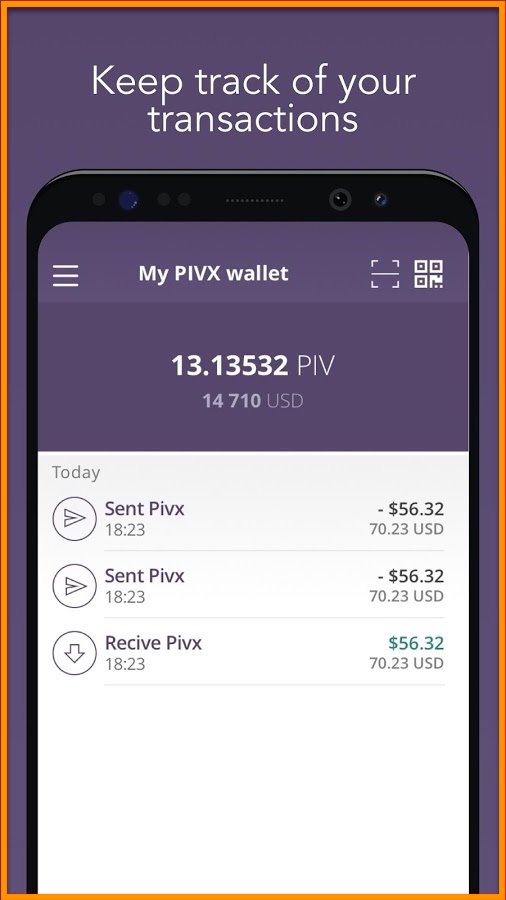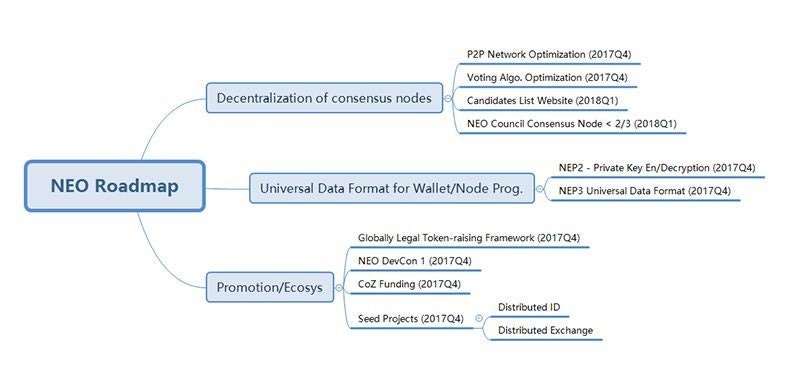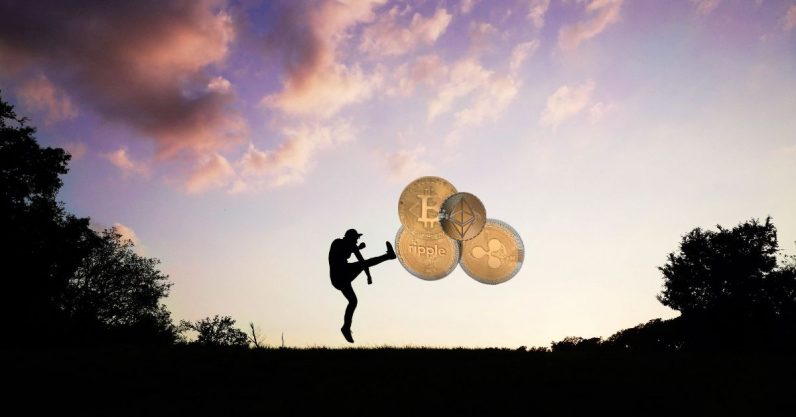2019-11-18 14:32 |
Bitcoin, Dogecoin, Dash, Litecoin, magic internet money (what we call it). These are all common names for what actually is technically known as cryptocurrency.
But what is cryptocurrency and how it works? Is it 21st-century unicorn, or the money of the future?
This ultimate guide explains the most important thing about cryptocurrencies, and you‘ll know more about it than most other humans after you read this guide.
Cryptocurrencies have been around for several years now and they have become a global phenomenon known to most people. However, there’s still a lot of misinformation and confusion over what cryptocurrency is exactly. It is still somehow geeky and not understood by most people. However, governments, banks and many companies are aware of its importance.
Today you‘ll have a hard time finding a government, a prominent software company, a big accounting firm, or a major bank that did not research cryptocurrencies, publish a paper about it or start a so-called blockchain-project.
Thomas Carper, the US-Senator, said that virtual currencies, perhaps most notably Bitcoin, had captured the imagination of some, had struck fear among others, and had confused the heck out of the rest of us.
But even bankers, developers, scientists, and consultants have a very limited knowledge about cryptocurrencies and they often fail to even understand the basic concepts.
Fear not though, let‘s walk through the whole story and let us be your guide to what many super-smart people are calling the new frontier of money.
What is cryptocurrency?
Where did cryptocurrencies originate?
Why is it important for you to learn about cryptocurrency?
And what do you need to know about cryptocurrencies?
(adsbygoogle = window.adsbygoogle || []).push({}); What are Cryptocurrencies and How They Emerged as a Side Product of Digital Cash?Cryptocurrencies emerged as a side product of another invention. Satoshi Nakamoto is the unknown inventor of Bitcoin the first and still most important cryptocurrency. Few people know that he never intended to invent a currency.
Nakamoto published a paper about virtual currency in 2008, and he said that he developed “A Peer-to-Peer Electronic Cash System.“
Nakamoto launched the software for Bitcoin the following year, which became both the first and most widely-known type of cryptocurrency.
Nakamoto found a way to build a decentralized digital cash system, and that was the single most important part of his invention. There have been many attempts to create digital money in the 1990’s, but they all failed.
Nakamoto tried to build a digital cash system without a central entity after he saw that all the centralized attempts fail. He wanted to build something like a Peer-to-Peer network for file sharing.
This decision became the birth of cryptocurrency, and they are the missing piece Nakamoto found to realize digital cash. The reason why is a bit technical and complex. However, you‘ll know more about cryptocurrencies than most people do if you get it. So, let‘s try to make it as simple as possible, shall we?
You need a payment network with accounts, balances, and transaction to realize digital cash. But that’s easy to understand. Prevent the so-called double spending is one major problem every payment network has to solve. This means to prevent that one entity spends the same amount twice, which is usually done by a central server that keeps record about the balances.
You don‘t have this server in a decentralized network. So to do this job, you need every single entity of the network. It is very important for every peer in the network to have a list with all transactions to check if future transactions are valid or an attempt to double spend.
But the question is, how can these entities keep a consensus about these records?
They need an absolute consensus, because if the peers of the network disagree about only one single, minor balance, everything is broken. You usually take a central authority to declare the correct state of balances. But how can the consensus be achieved without a central authority?
Nobody knew and nobody believed it was even possible until Nakamoto emerged out of nowhere.
Nakamoto proved it was, and his major innovation was to achieve consensus without a central authority. Cryptocurrencies are a part of this solution. They are actually the part that made the solution thrilling, fascinating and helped it to roll over the world.
What is Cryptocurrency Really?If you reduce cryptocurrency to a simple definition and take away all the noise around it, you find it to be just limited entries in a database no one can change without fulfilling specific conditions. This may seem ordinary. However, this is exactly how you can define a currency.
For example, let’s take the money on your bank account: What is it more than entries in a database that only under specific conditions can be changed? You can even take physical coins and notes because they are nothing more than limited entries in a public physical database that can only be changed if you match the condition that you physically own the coins and notes. As you can see, money is all about a verified entry in some kind of database of accounts, transactions, and balances.
How do Miners Create Coins and Confirm Transactions?Let’s now take a look at the mechanism ruling the databases of cryptocurrencies. A cryptocurrency like Bitcoin consists of a network of peers and every peer has a record of the complete history of all transactions and thus of the balance of every account.
A transaction is a file that says, “John gives X Bitcoin to Marry“. After that, the transaction is signed by Bob‘s private key, which is basic public key cryptography, nothing special at all. After the transaction was signed, it is broadcasted in the network and sent from one peer to every other peer. This is basic p2p-technology, nothing special at all, again.
The transaction is known almost instantly by the whole network, but it gets confirmed only after a specific amount of time.
You could say that cryptocurrencies are all about confirmation because confirmation is a critical concept in cryptocurrencies.
A transaction is pending and can be forged as long as it is unconfirmed. A transaction is set in stone when it is confirmed, which means that it can‘t be reversed, it is no longer forgeable, and it is part of an immutable record of historical transactions: of the so-called blockchain.
Transactions can be confirmed only by miners and this is their job in a cryptocurrency-network. They take transactions, stamp them as legit and spread them in the network, and after a miner confirms a transaction, every node has to add it to its database. This means that it has become part of the blockchain.
The miners are rewarded for this job with a token of the cryptocurrency, for example with Bitcoins. The miner‘s activity is the single most important part of cryptocurrency-system. That’s why we should stay for a moment and take a deeper look on it.
What Do Miners Do?Cryptocurrency is created when powerful computers or “miners” are awarded currency after solving massively complex mathematical equations. It is important to note that everybody can be a miner. A decentralized network has no authority to delegate this task. That’s why a cryptocurrency needs some kind of mechanism to prevent one ruling party from abusing it. The system would break immediately if someone creates thousands of peers and spreads forged transactions.
That’s the reason why Nakamoto set the rule. He said that the miners need to invest some work of their computers to qualify for this task. In fact, they have to find a hash, which is basically a product of a cryptographic function. This hash connects the new block with its predecessor. This is called the Proof-of-Work (POW), and in Bitcoin, it is based on the SHA 256 Hash algorithm.
You don‘t need to understand details about SHA 256, and it‘s only important you know that it can be the basis of a cryptologic puzzle the miners compete to solve. A miner can build a block after finding a solution, and add it to the blockchain. As an incentive, he has the right to add a so-called coinbase transaction that gives him a specific number of Bitcoins and this is the only way to create valid Bitcoins.
Bitcoins can only be created if miners solve massively complex mathematical equations using single or groups of incredibly powerful supercomputers. The difficulty of this puzzle increases the amount of computer power the whole miner’s invest. That’s the reason why there is only a specific amount of cryptocurrency token than can be created in a given amount of time and this is part of the consensus no peer in the network can break.
Revolutionary PropertiesBitcoin is a decentralized network of peers that keep a consensus about accounts and balances, and if you really think about it, it is more a currency than the numbers you see in your bank account. What are these numbers more than entries in a database – a database that can be changed by rules you don‘t know and by people you don‘t see?
Basically, cryptocurrencies are entries about token in decentralized consensus-databases, and they are called CRYPTOcurrencies because the consensus-keeping process is secured by strong cryptography. Cryptocurrencies are built on cryptography and they are secured by math, and not by people or by trust. You are more likely to get hit by a meteorite than that a bitcoin address is compromised.
We need to separate between transactional and monetary properties when we are describing the properties of cryptocurrencies. Most cryptocurrencies share a common set of properties. However, they are not carved in stone.
Transactional PropertiesPermissionless – You don‘t have to ask anybody to use cryptocurrency, because it‘s just a software that everybody can download for free. You can receive and send Bitcoins or other cryptocurrencies after you installed it. There is no gatekeeper and no one can prevent you.Secure -Cryptocurrency funds are locked in a public key cryptography system and only the owner of the private key can send cryptocurrency. A Bitcoin address is more secure than Fort Knox because strong cryptography and the magic of big numbers make it impossible to break this scheme.Fast and global -Transactions are propagated almost immediately in the network and are confirmed in few minutes. They are completely indifferent of your physical location because they happen in a global network of computers. It doesn‘t matter if I send Bitcoin to someone on the other side of the world or to my neighbour.Pseudonymous -Neither accounts nor transactions are connected to real world identities, and Bitcoins are received on so-called addresses, which are randomly seeming chains of around 30 characters. It is usually possible to analyze the transaction flow. However, it is not necessarily possible to connect the real world identity of users with those addresses.Irreversible -A transaction can‘t be reversed after confirmation. By nobody, and I mean NOBODY. Not you, not your miner, not Nakamoto, not the president of the United States, not your bank. Nobody. If you send money, you send it. Period. There is no safety net and no one can help you if a hacker steals your funds from your computer or if you send your funds to a scammer.Monetary PropertiesNo debt but bearer – The Fiat-money on your bank account is created by debt. Also, the numbers you see on your ledger represent nothing but debts. It is essentially a system of IOU. Cryptocurrencies only represent themselves and they don‘t represent debts. Cryptocurrencies are money as hard as coins of gold.Controlled supply – It is important to note that most cryptocurrencies limit the supply of the token. In Bitcoin, the supply decreases in time, and somewhere in 2140, it will reach its final number. All cryptocurrencies control the supply of the token by a schedule written in the code, which means that the monetary supply of a cryptocurrency in every given moment in the future can roughly be calculated. This is very useful because there is no surprise.You need to consider both properties to understand the revolutionary impact of cryptocurrencies. Bitcoin as a pseudonymous, irreversible, and permissionless means of payment is an attack on the control of governments and banks over the monetary transactions of their citizens. You can‘t undo a transaction, you can‘t prohibit someone to accept a payment, and you can‘t hinder someone to use Bitcoin.
Cryptocurrencies attack the scope of the monetary policy as money with a limited, controlled supply that is not changeable by a bank, a government, or any other central institution. They manipulate the monetary supply and thus take away the control central banks take on deflation or inflation.
Cryptocurrencies – Dawn of a New EconomyCryptocurrencies have become a success mostly due to its revolutionary properties. I believe that their inventor, Satoshi Nakamoto, did not even dare to dream of such success. Every other attempt to create a digital cash system didn‘t attract a critical mass of users. However, Bitcoin had something that provoked fascination and enthusiasm, and sometimes it feels more like religion than technology.
Cryptocurrencies are digital gold, and they are a fast and comfortable means of payment with a worldwide scope. They are also private and anonymous enough to serve as a means of payment for black markets and any other outlawed economic activity. Cryptocurrencies are money that promises to preserve and increase its value over time, and also money that is secure from political influence.
Cryptocurrencies are more used for payment. However, its use as a means of speculations and a store of value dwarfs the payment aspects. Cryptocurrencies gave birth to a fast growing and incredibly dynamic market for speculators and investors. Exchanges like shapeshift, poloniex , or Okcoin enable the trade of hundreds of cryptocurrencies and their daily trade volume exceeds that of major European stock exchanges.
At the same time, the praxis of Initial Coin Distribution (ICO), mostly facilitated by Ethereum‘s smart contracts, gave life to incredibly successful crowdfunding projects. The idea of these projects was to collect millions of dollars, and in the case of “The DAO” it has been more than $150 million.
You experience extreme volatility in this rich ecosystem of coins and token. It‘s common that a coin gains 10% a day – sometimes even 100% – just to lose the same the next day. Your coin‘s value can grow up to 1000% in one or two weeks if you are lucky.
Bitcoin remains by far the most famous cryptocurrency. However, it is important to note that most other cryptocurrencies have zero non-speculative impact, so investors and users should keep an eye on several cryptocurrencies. Here is a list of the most popular cryptocurrencies available on the market.
(adsbygoogle = window.adsbygoogle || []).push({}); Most known CoinsBitcoin
Bitcoin is the first and most famous cryptocurrency. Bitcoin serves as a digital gold standard in the whole cryptocurrency-industry and it is gaining acceptance as a way to transact business with many online and some offline retailers. Bitcoin is used as a global means of payment and is the de-facto currency of cyber-crime like dark net markets or ransomware. Bitcoin‘s price has increased from zero to more than $650 after 7 years in existence. Also, its transaction volume reached more than 200.000 daily transactions. If I was to find a comparison that people can easily relate it to is Gold, because the value for both is determined by the markets and fluctuate based on the market forces. One of the challenges for Bitcoin is the speed of processing transactions and scalability. This may limit its uses.
There is not much more to say: Bitcoin is the one and only and it is here to stay.
Ethereum
Ethereum is the brainchild of young crypto-genius Vitalik Buterin. It has ascended to the second place in the hierarchy of cryptocurrencies, and has certainly been getting a ton of publicity since the beginning of the 2017 having risen from $8 at the beginning of the year to over $260 as of the date of this article. Its blockchain does not only validate a set of accounts and balances but of so-called states, which means that Ethereum can not only process transactions but complex contracts and programs.
Thanks to this flexibility, Ethereum is the perfect instrument for blockchain application. However, this comes at a cost. The developers decided to do a hard fork without consensus after the Hack of the DAO – an Ethereum based smart contract. This resulted in the emerge of Ethereum Classic. Ethereum is more a family of cryptocurrencies than a single currency because there are several clones of Ethereum, and Ethereum itself is a host of several Tokens like Augur and DigixDAO.
Ripple
Ripple is maybe the least popular – or most hated – project in the cryptocurrency community. Ripple has a native cryptocurrency – XRP. However, it is more about a network to process IOUs than the cryptocurrency itself. XRP, the currency, serves more as a token to protect the network against spam.
Ripple Labs created every XRP-token, and it is distributed by them on will. That’s the reason why Ripple is often called pre-mined in the community and dissed as no real cryptocurrency. Also, XRP is not considered as a good store of value.
Banks, on the other hand, seem to like Ripple and they adopt the system with an increasing pace.
Litecoin
Litecoin was one of the first cryptocurrencies after Bitcoin, and is also one of the first cryptocurrencies to be considered a Bitcoin clone, also known as alternative coins or alt-coins. Litecoin is the most widely used altcoin and it was created by Coinbase engineer Charlie Lee in 2011 while he worked at Google. Litecoin was a real innovation. It was faster than bitcoin, with a larger amount of token and a new mining algorithm. It was perfectly tailored to be the smaller brother of bitcoin. It facilitated the emerge of several other cryptocurrencies, such as Feathercoin and Dogecoin, which used its codebase but made it even more lighter.
Litecoin lost its second place after bitcoin because it failed to find a real use case. However, it is still actively developed and traded and is hoarded as a backup if Bitcoin fails.
Monero
Monero is a privacy centric altcoin and it is the most prominent example of the cryptonite algorithm. This algorithm was designed in order to add the privacy properties Bitcoin is missing. Every transaction is documented in the blockchain if you use Bitcoin, and the trail of transactions can be followed. The cryptonite algorithm was able to cut through that trail with the introduction of a concept called ring-signatures.
Bytecoin was the first implementation of cryptonite. However, it was heavily premined and thus rejected by the community. The first non-premined clone of bytecoin was Monero and it raised a lot of awareness. There are several other incarnations of cryptonote with their own little improvements. However, none of it did ever achieve the same popularity as Monero.
Monero‘s popularity peaked in summer 2016. At that time, some darknetmarkets decided to accept it as a currency, which resulted in a steady increase in the price. However, the actual usage of Monero seems to remain disappointingly small.
Ethereum Classic
Ethereum Classic is not a new cryptocurrency. It is actually a split from an existing cryptocurrency, Ethereum. Both blockchains are identical in every way up until block 1920000 where the hard-fork to refund The DAO token holders was implemented. This means that all the balances, transactions, and wallets that happened on Ethereum until the hard-fork are still valid on the Ethereum Classic Blockchain. The blockchains were split in two after the hard-fork, and now they act individually.
Ethereum Classic still has all the same specifications as Ethereum, such as average block time, reward and size, and offers the same features, such as the creation and deployment of smart contract and Decentralized applications.
Dash
Dash incorporates several key innovations, some aimed to simply improve the functioning of the system and others towards increasing anonymity. Dash was introduced by creators Kyle Hagan and Evan Duffield, and its core purpose is to act as a kind of electronic cash, providing a level of anonymity hitherto unheard of among cryptocurrencies. Dash is not yet widely accepted by retailers. However, it is accepted by a fair selection of independent businesses. Its value per coin is also one of the highest on the market and it is currently a top five cryptocurrency by market cap.
Whether you are simply looking for a promising investment opportunity or are interested in making anonymous global transactions, Dash offers both unique utility and monetary value.
Augur
Augur is an open-source prediction market platform that is completely decentralized. Augur is the perfect match for opinion-related sports betting, and it’s probable that gambling will be the platform’s primary use. However, Augur won’t be limited to sports betting. Augur could be used by businesses to offer rewards and bonuses to employees, to predict which actors or musicians will win coveted awards, political and presidential outcomes, to predict whether or not certain projects will be completed on time or within budget, and virtually any other scenario users can think of. Augur is not widely used today. However, the potential uses are almost limitless and decentralized prediction markets will likely influence the way we live in many ways.
NEM
NEM, or New Economy Movement, is a blockchain platform and cryptocurrency launched in 2015. NEM is unique for its multisignature accounts, its proof-of-importance (POI) algorithm, and its 1 minute block time, among other unique innovations. NEM has a unique design architecture consisting of two components: the client (which interacts with the nodes), and the node (also known as the NEM infrastructure server or NIS).
Waves
Waves is an open blockchain platform – similar to the bitcoin blockchain – that promises to bring blockchain technology to the people. It allows anyone to launch their own digital token in less than 60 seconds. After that, you can trade that digital token for fiat currencies and crypto-assets. The Waves Platform relies on fiat gateways run by compliant operators and these operators are organizations that allow users to easily convert fiat currencies into digital tokens. Waves was just launched in 2016. However, the platform has already been home to a number of big success stories – including Upcoin and Tokenomica. Also, Waves raised roughly 30,000 BTC over the course of its crowdfunding campaign.
Besides those, there are hundreds of cryptocurrencies of several families, but most of them are nothing more than attempts to reach investors and quickly make money. However, there are also a lot of them promise playgrounds to test innovations in cryptocurrency-technology.
What is the Future of Cryptocurrencies?The market of cryptocurrencies is fast and wild, and nearly every day old cryptocurrencies die, new emerge, investors lose money, and early adopters get wealthy. Every cryptocurrency comes with a promise, and most of them want to turn the world around. However, few survive the first months. Most of them are pumped and dumped by speculators. They live on as zombie coins until the last bag holder loses hope ever to see a return on his investment.
Cryptocurrencies Have Varying Levels of Legality
Ecuador, China, Bolivia, Iceland, and Vietnam have outright banned Bitcoin. Russia is also working on a bill to do the same. Several European Union countries, Australia, the US and Canada are “Bitcoin-friendly.” The US government is cautiously optimistic about the system. The Treasury Department began issuing guidance for Bitcoin users in 2013. Also, the IRS has categorized the currency as property for tax purposes. That doesn’t mean the Feds aren’t worried about how they might be used for nefarious purposes, such as funding terrorist activities or money laundering. However, these are massive steps in the right direction for future stability and value. Bitcoin also became infamous as the currency-of-choice on The Silk Road. This is the digital black market for weapons, drugs, and other illegal vices. It was shut down by the Feds in 2013. Cryptocurrency as a whole is on a very fast track for widespread acceptance and eventual regulation, despite its initial fringe status.
Cryptocurrencies are Already Accepted on Lots of Places
Acceptance is gaining steam in most major cities, particularly with Bitcoin. From car dealerships like Tesla to coffee shops, changes are happening. Additionally, major e-commerce companies like Amazon, PayPal, Target, and Overstock have adopted bitcoin payment systems. Obviously, you can purchase things from other people with cryptocurrencies too. You may have also seen Bitcoin “ATMs” popping up as well.
Anyone Can Purchase Cryptocurrency
Cryptocurrency of all types can be purchased on exchanges internet-wide. However, first you need to get a “wallet”. There are wallets for desktop, mobile and those that work directly with your bank account, but we strongly recommend a lot of research on many of the web’s sources before you buy a wallet. Redding communities like r/bitcoin and r/cryptocurrency are perfect for those who want to start to wade into the very large ocean that is cryptocurrency. We also recommend Bitcoint.org. It is an extremely useful source of basic information. Once you’re ready, you can research the variety of stock exchanges available, such as Kraken, GDAX, and Coinbase.
SummaryMarkets are dirty, but this doesn‘t change the fact that cryptocurrencies are here to stay. A new frontier is upon us and cryptocurrencies are here to change the world. In fact, this is already happening and people all over the world purchase Bitcoin to protect themselves against the devaluation of their national currency. The revolution is already happening and virtual currency offers the type of freedom that doesn’t exist with our present currency systems. Imagine a world with no crazy exchange rates, no bank transaction fees, and instantaneous currency transfers. It may be a long way off. However, you can see why the traditional financial systems are everything from wary to downright frightened of this potentially game-changing shift in how we obtain, save, and use money.
Cryptocurrencies change the world, and you can either stand beside and observe or you can become part of history in the making.
The post What is Cryptocurrency: Ultimate Guide about the Cryptocurrency Universe appeared first on CaptainAltcoin.
origin »Global Cryptocurrency (GCC) íà Currencies.ru
|
|





















